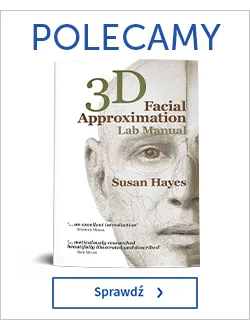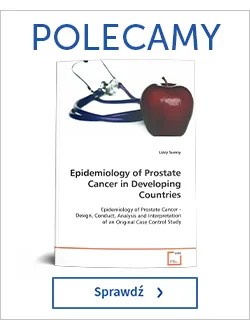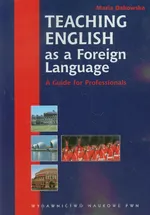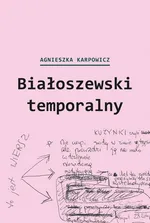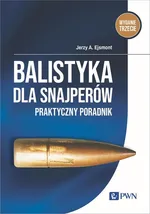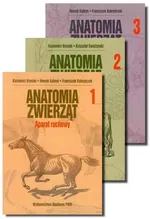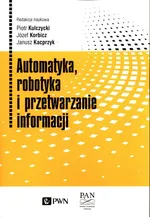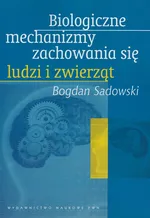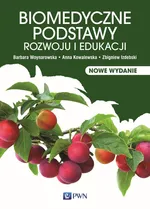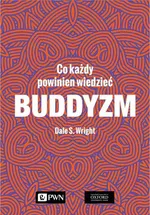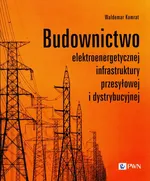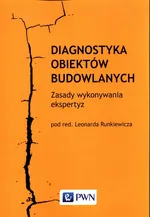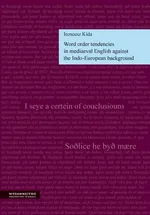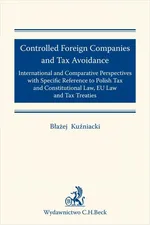- Kategorie:
- Język wydania: angielski
- ISBN: 978-83-01-21512-5
- ISBN druku: 978-83-01-14498-2
- Liczba stron: 292
-
Sposób dostarczenia produktu elektronicznegoProdukty elektroniczne takie jak Ebooki czy Audiobooki są udostępniane online po uprzednim opłaceniu (PayU, BLIK) na stronie Twoje konto > Biblioteka.Pliki można pobrać zazwyczaj w ciągu kilku-kilkunastu minut po uzyskaniu poprawnej autoryzacji płatności, choć w przypadku niektórych publikacji elektronicznych czas oczekiwania może być nieco dłuższy.Sprzedaż terytorialna towarów elektronicznych jest regulowana wyłącznie ograniczeniami terytorialnymi licencji konkretnych produktów.
-
Ważne informacje techniczne
-
Minimalne wymagania sprzętowe:
- procesor: architektura x86 1GHz lub odpowiedniki w pozostałych architekturach
- Pamięć operacyjna: 512MB
- Monitor i karta graficzna: zgodny ze standardem XGA, minimalna rozdzielczość 1024x768 16bit
- Dysk twardy: dowolny obsługujący system operacyjny z minimalnie 100MB wolnego miejsca
- Mysz lub inny manipulator + klawiatura
- Karta sieciowa/modem: umożliwiająca dostęp do sieci Internet z prędkością 512kb/s
-
Minimalne wymagania oprogramowania:
- System Operacyjny: System MS Windows 95 i wyżej, Linux z X.ORG, MacOS 9 lub wyżej, najnowsze systemy mobilne: Android, iPhone, SymbianOS, Windows Mobile
- Przeglądarka internetowa: Internet Explorer 7 lub wyżej, Opera 9 i wyżej, FireFox 2 i wyżej, Chrome 1.0 i wyżej, Safari 5
- Przeglądarka z obsługą ciasteczek i włączoną obsługą JavaScript
- Zalecany plugin Flash Player w wersji 10.0 lub wyżej.
-
Informacja o formatach plików:
- PDF - format polecany do czytania na laptopach oraz komputerach stacjonarnych.
- EPUB - format pliku, który umożliwia czytanie książek elektronicznych na urządzeniach z mniejszymi ekranami (np. e-czytnik lub smartfon), dając możliwość dopasowania tekstu do wielkości urządzenia i preferencji użytkownika.
- MOBI - format zapisu firmy Mobipocket, który można pobrać na dowolne urządzenie elektroniczne (np.e-czytnik Kindle) z zainstalowanym programem (np. MobiPocket Reader) pozwalającym czytać pliki MOBI.
- Audiobooki w formacie MP3 - format pliku, przeznaczony do odsłuchu nagrań audio.
-
Rodzaje zabezpieczeń plików:
- Watermark - (znak wodny) to zaszyfrowana informacja o użytkowniku, który zakupił produkt. Dzięki temu łatwo jest zidentyfikować użytkownika, który rozpowszechnił produkt w sposób niezgodny z prawem.
- Brak zabezpieczenia - część oferowanych w naszym sklepie plików nie posiada zabezpieczeń. Zazwyczaj tego typu pliki można pobierać ograniczoną ilość razy, określaną przez dostawcę publikacji elektronicznych. W przypadku zbyt dużej ilości pobrań plików na stronie WWW pojawia się stosowny komunikat.
TEACHING ENGLISH as a Foreign Language
(eBook)A Guide for Professionals
-
Druk: Warszawa, 2011
-
Wydanie/Copyright: wyd. 1
-
Autor: Maria Dakowska
-
Wydawca: Wydawnictwo Naukowe PWN
-
Formaty:
ePub mobi (Watermark)WatermarkZnak wodny czyli Watermark to zaszyfrowana informacja o użytkowniku, który zakupił produkt. Dzięki temu łatwo jest zidentyfikować użytkownika, który rozpowszechnił produkt w sposób niezgodny z prawem. Ten rodzaj zabezpieczenia jest zdecydowanie najbardziej przyjazny dla użytkownika, ponieważ aby otworzyć książkę zabezpieczoną Watermarkiem nie jest potrzebne konto Adobe ID oraz autoryzacja urządzenia.
Cena katalogowa – rynkowa cena produktu, często jest drukowana przez wydawcę na książce.
Najniższa cena z 30 dni – najniższa cena sprzedaży produktu w księgarni z ostatnich 30 dni, obowiązująca przed zmianą ceny.
Wszystkie ceny, łącznie z ceną sprzedaży, zawierają podatek VAT.
TEACHING ENGLISH as a Foreign Language
Podręcznik wykorzystuje najnowsze osiągnięcia językoznawstwa, psychologii uczenia się, dydaktyki i teorii komunikacji. Przedstawia problemy dydaktyki z punktu widzenia przyswajania języka. Kładzie nacisk na aktywną rolę ucznia w procesie dydaktycznym poprzez wybór odpowiedniej strategii uczenia się. Szczególnie podkreśla wagę procesów stałych i powtarzalnych w przyswajaniu języka obcego. Krótko omawia tradycje i obecny stan dydaktyki języków obcych w Polsce i na świecie. Każdy rozdział zawiera podsumowanie, wykaz lektur uzupełniających, pytania, zadania i ćwiczenia, niezbędne w przygotowaniach do zaliczeń i egzaminów. Indeks rzeczowy i osób oraz słownik terminów znakomicie ułatwiają korzystanie z podręcznika i pomagają w przyswojeniu wiedzy.
PART ONE Where do our ideas on foreign language teaching come from? 17 1. Foreign language teaching in a historical perspective 17 1.1. The role of Latin 17 1.2. Grammar as the key to foreign language learning. The Grammar Translation Method 18 1.3. Reactions to the Grammar Translation Method 20 1.3.1. The Reform Movement 22 1.4. The Natural and the Direct Methods 23 1.5. The Reading Method 26 1.6. The current view on the role of grammar 28 1.7. The current view on the function of translation 29 1.8. The current view on the role of the text 32 Topics and review questions 32 Further reading 33 PART TWO Mainstream and alternative methods in TEFL in the second half of the 20th century 36 2. Audiolingualism in teaching English as a foreign language 36 2.1. Approach, method, technique 36 2.2. Sources of audiolingualism 36 2.2.1. Influences from psychology 37 2.2.2. Influences from linguistics 38 2.3. The Audiolingual Approach, Method and Techniques 39 2.3.1. Five audiolingual slogans and their influence on the method of teaching 40 2.3.2. Further characteristic features of the Audiolingual Method 43 2.3.3. Characteristic techniques 45 2.4. A critical look at the Audiolingual Approach, Method and Techniques 47 2.5. The current view on drill, imitation, and repetition 49 Topics and review questions 52 Further reading 52 3. The Cognitive Code Learning Theory 52 3.1. Influences from psychology 53 3.2. Influences from linguistics 55 3.3. Five slogans of the Cognitive Approach and their implications for the Cognitive Method of foreign language teaching 57 3.4. Further characteristic features of the Cognitive Method 59 3.5. Closing remarks on the Cognitive Method 62 3.6. The current view on the link between materials, meaning, and memory processes 63 Topics and review questions 64 Further reading 65 4. Developments in foreign language teaching following the Audiolingual and the Cognitive Methods 65 4.1. Pessimism regarding the search for an ideal method 65 4.2. The eclectic orientation 66 4.3. The alternative methods 67 4.3.1. The Silent Way by Caleb Gattegno 68 4.3.2. Total Physical Response by James Asher 71 4.3.3. Suggestopedia by Georgi Lozanov 73 4.3.4. Community Language Learning by Charles Curran 76 Topics and review questions 79 Further reading 80 4.4. Focus on the learner 80 4.5. Individual factors in foreign language learning 82 4.6. Individualizing foreign language instruction 84 4.7. The beginnings of Second Language Acquisition Research 86 Topics and review questions 87 Further reading 88 PART THREE Communicative Language Teaching (CLT) 90 5. The Communicative Approach to foreign language teaching 90 5.1. Foundations of the Communicative Approach 90 5.2. Interest in doing things with words 90 5.3. The notion of communicative competence 92 5.4. The importance of discourse in CLT 94 5.5. The notion of role 97 5.6. Developments in communicative syllabus design 98 6. The Communicative Method and Techniques. Evaluating CLT 101 6.1. The Communicative Method 101 6.2. Criteria of communication in CLT 101 6.3. Principles of the Communicative Method 103 6.3.1. Further issues in the Communicative Method 105 6.4. Typical activities and techniques 107 6.4.1. Structured dialogue 108 6.4.2. Jig-saw reading and listening 108 6.4.3. Role-play 109 Further reading 110 6.4.4. Drama 110 Further reading 111 6.4.5. Simulation 111 Further reading 113 6.4.6. Project 113 Further reading 115 6.5. Evaluating CLT 115 Topics and review questions 121 Further reading 122 PART FOUR The current perspective on teaching English as a foreign language 123 7. Focus on verbal communication, learning, and reasoning 123 7.1. The nature of communicative processes 124 7.2. The main components of our learning ‘equipment’ 128 7.3. Strong ties between verbal communication and learning 131 7.4. Language as a special code of verbal communication 132 7.5. Reasoning processes available to the language learner 133 Topics and review questions 134 Further reading 135 8. The whole-person involvement in verbal communication and learning 135 8.1. The learner’s contribution to the dynamics of verbal communication and learning 135 8.1.1. The role of cognitive resources 136 8.1.2. Making communicative adjustments 137 8.1.3. The learner’s creative and constructive involvement 137 8.2. Personality factors 138 8.2.1. The role of the learner’s personality 138 8.2.2. The role of self-concept and self-esteem 138 8.2.3. Communicative assertiveness 140 8.3. The learner’s development along the lifespan 141 Topics and review questions 142 Further reading 143 9. Conditions for foreign language learning. Input, interaction, feedback. The role of cultivation strategies 143 9.1. Primary conditions for foreign language learning 144 9.2. What can we learn from observing children? 145 9.3. Secondary conditions for foreign language learning. Cultivation of language learning in the classroom 146 9.3.1. The essential processes in foreign language learning and teaching 147 9.4. A look back at the traditional approaches to foreign language teaching 150 9.5. The nature of teaching – the role of the teacher 151 9.6. Focus on form and accuracy 153 9.7. The origin and role of the foreign language teaching method at the beginning of the 21st century 154 Topics and review questions 156 Further reading 156 PART FIVE How communication and learning emerge 157 10. The development of the language learner in childhood and adolescence 157 10.1. Landmarks of development 158 10.1.1. Gradual emergence of verbal communication 160 10.2. The first stage – infancy and toddlerhood 160 10.2.1. The psychosocial development 160 10.2.2. Communication 161 10.3. Early childhood (3–6 years) 163 10.3.1. Language and communication in early childhood 165 10.3.2. Play in early childhood 166 10.4. Middle childhood 166 10.4.1. Piaget’s stage of concrete operations 166 10.4.2. The development of memory in middle childhood 167 10.4.3. The development of thinking 169 10.4.4. Language development 169 10.4.5. Developing a sense of humour 170 10.4.6. Gifted and creative children 171 10.4.7. Personality and social development in middle childhood 172 10.5. Adolescence 173 10.5.1. Intellectual development in adolescence 174 10.5.2. Personality development 174 10.5.3. The search for identity, including sexual identity 175 10.6. Resulting principles of foreign language teaching in childhood and adolescence 176 Topics and review questions 178 Further reading 178 PART SIX Foreign language skills in the context of verbal communication 179 11. Spoken and written discourse 179 11.1. Comprehension and production as an integral part of verbal communication 179 11.2. Differences between spoken and written discourse 180 11.3. Authentic and didactic texts. Authentic and didactic tasks 183 11.4. Stages in learning a skill in a foreign language 187 Topics and review questions 189 Further reading 190 12. Receptive skills: reading comprehension 190 12.1. Reading as a form of interaction 190 12.2. Bottom-up and top-down processes in reading 191 12.3. The learner’s angle on reading 192 12.4. The levels of reading comprehension 193 12.5. The teacher’s analysis of the text for its communicative and language learning ,potential 196 12.6. Sources of difficulty in reading comprehension and strategies of dealing with them . 200 12.6.1. Increasing background knowledge 200 12.6.2. Highlighting the genre 202 12.7. Vocabulary and the reading passage 203 12.8. Types of reading and their function in learning English as a foreign language 205 12.9. Options in designing reading tasks. Pre-reading, reading, and follow-up 207 Further reading 212 13. Receptive skills: listening comprehension 212 13.1. Functions of auditory input in foreign language learning 213 13.1.1. The learner as a member of an audience 213 13.1.2. The learner as an addressee 214 13.1.3. Input for pronunciation 215 13.2. Listening comprehension as an integral part of verbal communication 217 13.3. Difficulties experienced by foreign language learners in listening comprehension tasks 218 13.4. Guidelines for listening tasks 220 13.5. Auditory input and various follow-up activities 220 13.6. Activities aimed at developing listening comprehension 222 13.7. The function of tapescript in listening comprehension tasks 226 13.8. Options in designing a listening comprehension task 227 Further reading 231 14. Productive skills: speaking 231 14.1. Speaking as an act of verbal communication 232 14.2. Long-term investment in speaking 234 14.3. The structure of conversation 235 14.4. Abilites involved in participating in a conversation 237 14.5. The role of anxiety in developing the speaking skill 238 14.6. Cultivating articulacy in EFL 240 14.7. Selected activities for the development of the speaking skill 244 Topics and review questions 247 Further reading 247 15. Productive skills: writing 248 15.1. Writing as an act of constructing a message 248 15.2. Differences between experienced and inexperienced writers 250 15.3. Long-term investment in the writing skill 251 15.4. Learning to write versus process writing 252 15.5. Sample activities in learning how to write in EFL 254 15.6. Process writing 258 15.7. Error correction in written work 259 Topics and review questions 261 Further reading 262 Conclusions 263 Additional terms 267 References 273 Index 281 Name index 289
-
Inne autora
-
Inne z kategorii
-
Inne wydawcy



